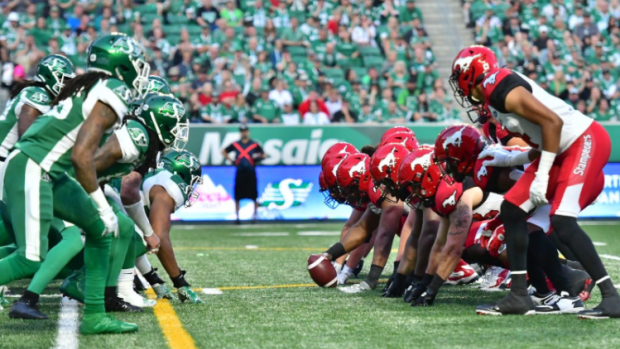May 12, 2020
CFL’s unique qualities complicate financial situation
With the clock ticking, the league has some very sensitive ground to navigate as it pushes forward with its plea for as much as $150 million in government assistance, Dave Naylor writes.
By Dave Naylor

Navigating any professional sports league through COVID-19 is an extremely challenging exercise, but the uniqueness of the Canadian Football League makes its current situation especially difficult.
The CFL is in a bind because its business model relies primarily on gate, with television revenue a distant second. It’s the exact opposite of the NFL, which plans to play this summer – presumably with or without fans.
Stripped of their primary revenue stream, CFL teams can’t afford a normal season, much less one that comes with the added expenses of operating in a COVID-19 world – everything from providing safe accommodation for players and staff to non-stop testing.
But with the clock ticking, the league has some very sensitive ground to navigate as it pushes forward with its plea for as much as $150 million in government assistance.
That was evident when CFL commissioner Randy Ambrosie appeared virtually before a parliamentary committee in Ottawa last week, where he was asked why the players were not being represented and was questioned about the league’s finances being as bleak as he has suggested.
All of that may be little more than backbench MP grandstanding, the kind of thing that tends to happen at such hearings. But the public and media reaction cried out for more transparency about the league’s current state, and especially for more clarity on exactly where the money will go – $30 million now, perhaps another $70 million for a shortened season and another $50 million to see the league into the 2021 season.
The league is now back in conversation with its players association and is trying to work through a more detailed version of its ask, all while waiting in line among a lot of other industries and businesses hoping to get the government’s attention and its money.
But here’s where some of the CFL’s unique qualities make things tricky. The league is comprised of nine franchises, three of which are community-owned and six that are owned privately by some very wealthy businessmen and organizations, including Maple Leaf Sports and Entertainment, a company valued in the billions.
Handing out financial assistance to publicly owned teams in Winnipeg, Saskatchewan and Edmonton might be politically navigable. But what about handing out assistance to owners whose fortunes beyond the CFL could easily absorb their team’s projected losses?
If the government decides that’s too politically risky, is it willing to call the league’s bluff and see if private owners will pay to see the league through COVID-19 or allow it to fold?
Before the government provides any financial assistance, two very large questions are going to need to be answered.
First, what amount of whatever assistance the government provides will go to players, in the likely event there is no season? And secondly, if money is going to the players, is it going to American players who reside mostly in the U.S., or just to players in Canada?
To say there is a fair bit of emotion around both of those questions is putting it mildly.
On the matter of the players being paid without there being a season, it’s important to note that roughly 20 per cent of 2020 player salaries have already been paid out in the form of off-season signing bonuses. So, in the event the players aren’t paid again for this season, some are going to come out better than others.
It’s not clear whether the CFL’s ask of the government included paying players if there is no season. But if that’s the league’s plan, how do you arrive on what’s fair compensation for a season not played? Fifty per cent of their 2020 salaries? Twenty per cent? Ten? What if the owners argue they need every nickel just to keep the league afloat so that they can ensure there is still a league for players to return to in 2021?
Then there’s the issue of residency. A little more than half of the CFL’s roughly 500 players are American, and most of those have permanent residences in the United States. Is the CFLPA planning to ensure American players in the U.S. get their share of whatever assistance the league passes on from the federal government? And isn’t someone going to ask why, with so many in this country in need, the federal government is sending tens of thousands of dollars to professional athletes who reside mostly in the U.S.?
Yet it may be hard for the union to get its share of federal assistance money from the league and then distribute it only to players on one side of the border.
What happens if the federal government decides the CFL isn’t a priority at this time, or gets scared off by the political dynamics?
Without government assistance of some kind, most expect the players will get nothing from the league.
Instead, they’d be left in the same category as others in the Canada or the U.S. whose jobs have simply disappeared or been put on hold amid the pandemic, which in this country means earning $2,000 per month.
And the owners would be left to ask themselves how deep they are willing to dig in order to carry the CFL into an uncertain future beyond this season.
Lots of difficult questions, no easy answers.


